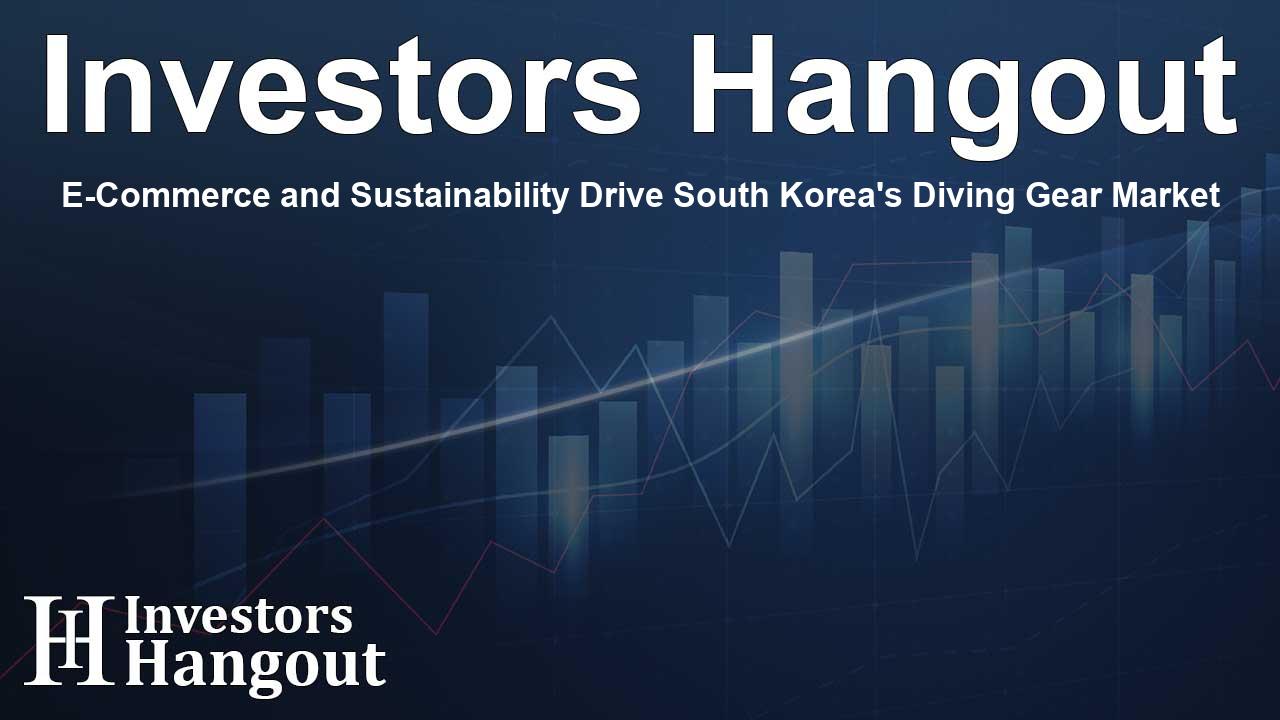E-Commerce and Sustainability Drive South Korea's Diving Gear Market

Scuba Diving Equipment Market Growth in South Korea
The scuba diving equipment market in South Korea is poised for significant growth, with projections estimating an increase of USD 78.5 million from 2025 to 2029. This expansion is linked to the rising popularity of e-commerce and the evolving needs of divers, both recreational and professional.
Market Trends Driven by E-Commerce
As online shopping continues to thrive, the scuba diving equipment market benefits from increased accessibility. Retailers are focusing on enhancing the customer experience through robust online platforms, offering a diverse product range that includes everything from basic diving gear, such as wetsuits and masks, to advanced underwater communication devices.
Safety and Trust in Online Purchases
With the convenience of e-commerce, customers are becoming more discerning regarding product quality and safety. They expect clear information and assurances that the equipment meets industry standards. Trust is essential, particularly in a market where safety is paramount for underwater activities.
Market Challenges Amidst Growth
While the market is set to grow, it faces challenges, particularly from counterfeit products. The increasing availability of imitation diving gear on e-commerce platforms can confuse consumers and affect the reputation of legitimate brands.
Sustainability as a Key Driver
In South Korea, there's a notable shift towards eco-friendly diving gear. Manufacturers are embracing sustainable materials, such as recycled fabrics, to meet the growing demand for environmentally responsible products. Brands like Fourth Element lead the way with unique offerings that balance performance with eco-friendliness.
Innovative Materials and Designs
Using recycled plastics and non-toxic materials is becoming a popular trend within the industry. Companies are innovating not only to reduce waste but also to attract environmentally conscious consumers who value sustainability.
Regulatory Support for Sustainable Practices
The regulatory landscape is evolving to support eco-friendly practices. As regulations become stricter regarding manufacturing processes and material sourcing, it's essential for companies to adapt quickly to maintain compliance and consumer trust.
Product Segmentation in the Diving Gear Market
The scuba diving equipment market segment includes various distribution channels, products, and types. This segmentation is essential for understanding consumer preferences and market dynamics.
Distribution Channels
In South Korea, the market is divided between online and offline channels. While online sales are increasing, specialty retail stores still play a crucial role in consumer engagement, providing firsthand experience and expert advice. Divers often prefer trying equipment in-store before making a purchase.
Product Lines
Scuba gear includes apparel, rebreathers, diving computers, and gauges. Popular items like masks and snorkels remain staples for beginners and seasoned divers alike.
The Role of Social Media and Community Engagement
Today's divers are increasingly turning to social media platforms to share experiences and seek advice. This digital community fosters engagement and can influence purchasing decisions as divers share tips and reviews of products they’ve tested.
Underwater Photography and Videography
The growing interest in underwater photography and videography also contributes to market dynamics. Divers seek gear that enhances their experience and allows them to document their underwater adventures using advanced cameras.
Competitive Landscape
Enhanced competition among local retailers is expected as the market grows. With the emergence of multiple brands, establishing a unique value proposition through quality and sustainability will be crucial for success.
Frequently Asked Questions
What is driving the growth of the scuba diving market in South Korea?
The growth is primarily driven by increased e-commerce activity and a shift toward sustainable and eco-friendly diving equipment.
How does e-commerce affect consumer trust in diving gear?
Consumers are becoming more cautious with their purchases, seeking reassurance about product quality and safety, making transparency in online retail essential.
What challenges does the South Korean scuba diving market face?
Challenges include the proliferation of counterfeit products and ensuring robust safety standards amidst rapid market growth.
How are manufacturers addressing sustainability?
Manufacturers are increasingly using recycled materials and sustainable practices in their production processes to cater to environmentally conscious consumers.
What role does social media play in the scuba diving community?
Social media enables divers to connect, share experiences, and make informed purchasing decisions based on community feedback and product testimonials.
About Investors Hangout
Investors Hangout is a leading online stock forum for financial discussion and learning, offering a wide range of free tools and resources. It draws in traders of all levels, who exchange market knowledge, investigate trading tactics, and keep an eye on industry developments in real time. Featuring financial articles, stock message boards, quotes, charts, company profiles, and live news updates. Through cooperative learning and a wealth of informational resources, it helps users from novices creating their first portfolios to experts honing their techniques. Join Investors Hangout today: https://investorshangout.com/
Disclaimer: The content of this article is solely for general informational purposes only; it does not represent legal, financial, or investment advice. Investors Hangout does not offer financial advice; the author is not a licensed financial advisor. Consult a qualified advisor before making any financial or investment decisions based on this article. The author's interpretation of publicly available data shapes the opinions presented here; as a result, they should not be taken as advice to purchase, sell, or hold any securities mentioned or any other investments. The author does not guarantee the accuracy, completeness, or timeliness of any material, providing it "as is." Information and market conditions may change; past performance is not indicative of future outcomes. If any of the material offered here is inaccurate, please contact us for corrections.